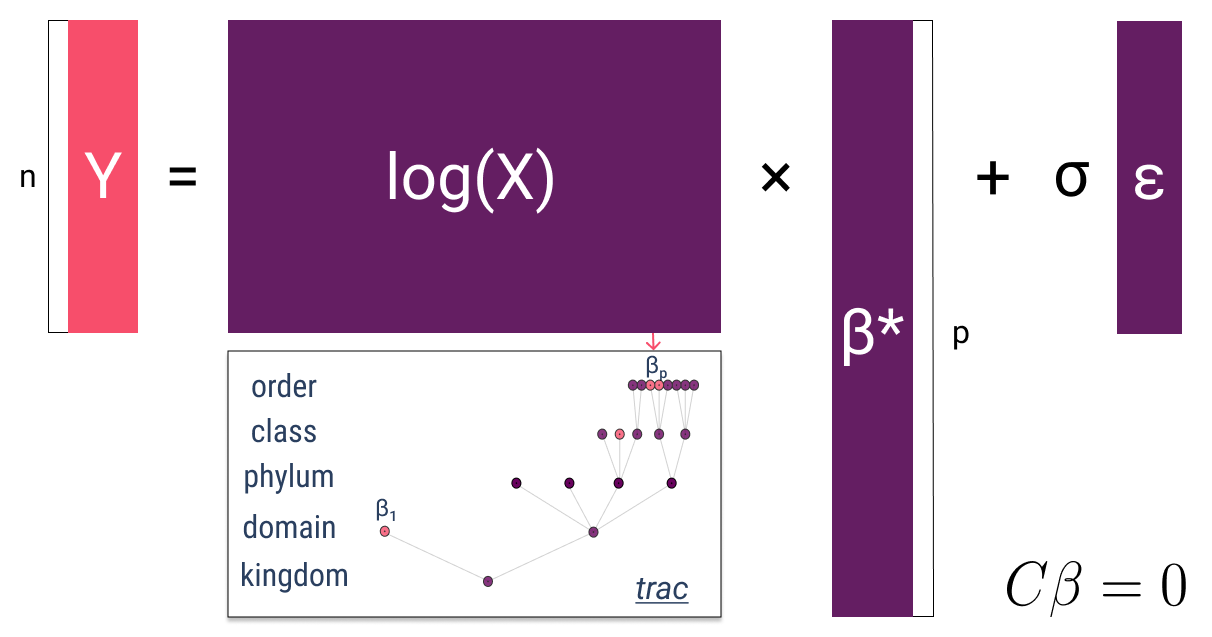Models Interpretation and Analysis#
Understanding Log-Contrast Model Results#
Log-contrast models transform compositional data to overcome the challenges of working with constrained data that sums to a constant. The interpretation of results requires careful consideration of the log-ratio nature of the transformations.

Regression Tasks#
In regression scenarios, log-contrast models predict continuous outcomes based on compositional predictors. The coefficients represent the effect of log-ratio changes in the composition on the response variable.
Key interpretation points:
Coefficients indicate how a unit change in the log-contrast affects the predicted outcome
Positive coefficients suggest that increases in the numerator taxa relative to the denominator taxa are associated with higher predicted values
The baseline (denominator) taxa serve as the reference for all comparisons
Classification Tasks#
For classification problems, log-contrast models use compositional features to predict categorical outcomes. The model learns decision boundaries in the log-ratio space.
Important considerations:
Feature importance reflects which log-contrasts best discriminate between classes
Class probabilities are based on the transformed compositional space
Interpretation should focus on relative abundance changes rather than absolute values
Model selection procedures help assess model reliability across different compositional profiles